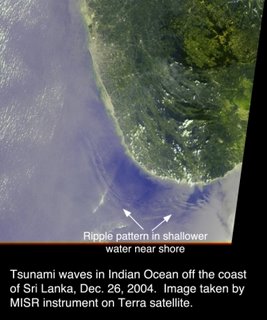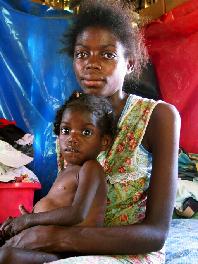Fraud HunterTrafficked abroad, she finds father 23yrs laterThe axiom -- truth is stranger than fiction -- so happily became a reality for Matiur Rahman who lost his daughter Rina in the late 80s and dramatically found her, along with her Dutch husband, when they came to Bangladesh for a visit recently.
Taking advantage of poverty and vulnerability of Matiur's family, a gang of child lifters posing as social workers sold Rina to a Dutch couple when she was only six-month old.
Rina, educated in the Netherlands and now a lawyer there, came to Bangladesh and saw her father for the first time at the initiative of an NGO -- Hotline Bangladesh -- at its Malibagh office in the capital. Overwhelmed with emotion, the father and daughter hugged each other.
"I am the happiest man in the world now. My heart was in flames for so many years and it is now over," Matiur said at the NGO office on Wednesday.
Equally moved, Rina said , "It is really strange and great. Visiting my country and finding out my parents has been a dream for me since I came to learn that I was from Bangladesh."
Matiur, Rina and her husband Danish went to Hotline office before the couple left the country yesterday.
Rina told The Daily Star, "I do not know the background of my migration to the Netherlands. I also do not know when and how my foster parents in that country adopted me as their daughter. I got all love and affection from them. The love and affection that my father here in Bangladesh has for me is also above anything else."
She went on, "I would like to visit my father here whenever possible and look after his wellbeing."
At one stage, such a reunion between the father and daughter had almost become impossible as there was no response even after Rina and Danish held a press conference in early August in Faridpur, seeking the address of her father.
Following a report in a Dhaka daily, Matiur, now an employee of Birdem Hospital in the city, rushed to the daily's office that sent him to Rosaline D Costa of Hotline. D Costa then contacted Rina to make the reunion possible at her office.
Matiur, who hails from Faridpur, was a rickshawpuller in Old Dhaka before independence. In 1972, he got a government-allotted room in Tongi. He along with his first wife Hasina, daughters Nilu and Laily and a son lived there. Later, he got separated from Hasina and married Halima, who gave birth to Rina in 1979.
Recalling the past, Matiur said some local employees of the Netherlands-based organisation Tere Des Homes had lured him into keeping his daughters in the Homes for proper care and education. And he could also visit them frequently. "They also took my signature on some stamps, saying that it was a contract for educating my children,"
Following the lucrative offer, poor Matiur sent Nilu and Laily to the Home in Tongi, which virtually was a shelter for children of the women dishonoured by the occupation forces during the Liberation War.
A few months later, Matiur went to see his daughters but did not find them there. He said, "I heard that my daughters were sold." All his efforts to find them out failed and his complaints against Home staff went ignored.
Later, some goons kidnapped Matiur and took him to Dhanmondi in the capital but he managed to escape.
He then filed a case against the Home staff for masterminding his abduction but his first wife Hasina sided with the abductors. "Hasina asked me to leave the place, saying that otherwise the Home staff would endanger his life. Halima and I then left the area, keeping Rina with Hasina," Matiur said.
It was sometime in 1980 when Matiur went to Tongi to see Hasina and Rina but found none of them. Locals told him that Hasina, in connivance with Tere Des Homes officials, sold Rina.
Matiur said like a mad he then started moving here and there to trace his daughters and lost contact also with his second wife Halima. "I did not know what had happened with the case I filed, but I just wanted to see my daughters. I went to offices of many NGOs and newspapers seeking their help."
He went on, "Allah has finally heard my prayers."
Matiur bought a saree for Rina and a lungi and fotua for his son-in-law, Danish. Wearing the local dress, they posed for a photo session with him on the premises of Hotline office.
"The feeling is strange, marvellous. It is above everything," Rina said.
Matiur said he has come to know that his eldest daughter Nilu is also in the Netherlands.
Rina said she would try to find out her sister." Life is really more cinematic than cinema," she added.


